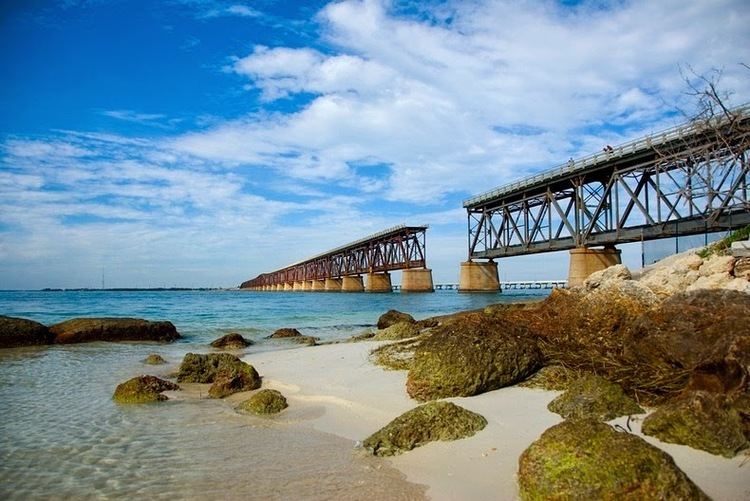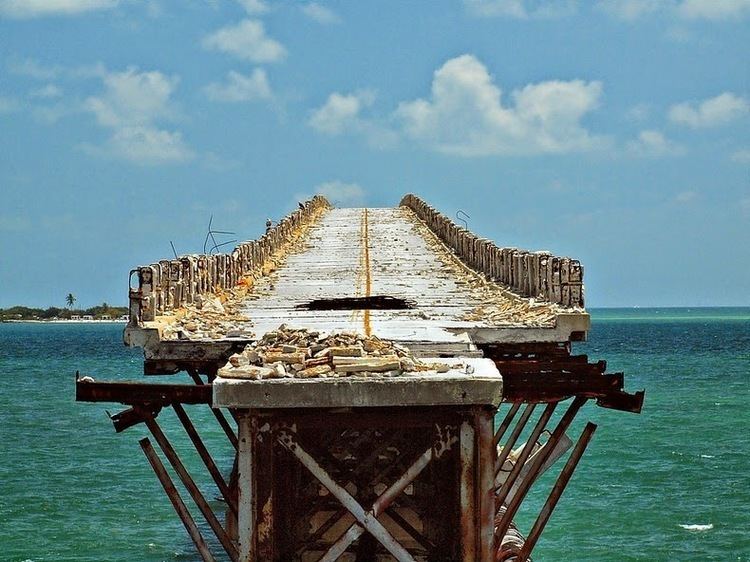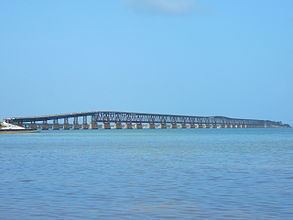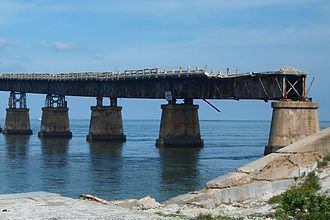Crosses Bahia Honda Channel Closed 1972 Construction started 1905 | Longest span 247 feet Opened 1912 Total length 1,541 m Body of water Bahia Honda Channel | |
 | ||
Bridge type Truss bridge, Plate girder bridge Similar Bahia Honda Key, Overseas Railroad, Spanish Harbor Key, Seven Mile Bridge, Jewfish Creek Bridge | ||
The Bahia Honda Rail Bridge is a derelict railroad bridge in the lower Florida Keys connecting Bahia Honda Key with Spanish Harbor Key. Originally part of the Overseas Railway, the state of Florida purchased it from the Florida East Coast Railway (FEC) after the 1935 Labor Day Hurricane and converted it for automobile use as part of the Overseas Highway in 1938. After a replacement Bahia Honda Bridge was opened in 1972, two spans of the bridge were removed to accommodate boat traffic.
Contents

History

The Bahia Honda railroad bridge was originally built by Henry Flagler as part of the FEC's Overseas Railroad. Opened in 1912, Flagler funded the railway construction between Miami and Key West using his own personal funds. The Labor Day Hurricane of 1935 destroyed much of the line, and FEC sought abandonment. It was purchased by the state of Florida and converted for highway use in 1938. Rather than rebuilding the bridge, the top of the structure was redecked for use as the Overseas Highway (the existing deck inside the truss was too narrow for vehicular traffic).

A new four-lane bridge was built in 1980, a few hundred yards north of the old bridge, replacing the former route of U.S. 1. The bridge provides a scenic overview of the area for tourists. Two of the truss spans have been removed in order to facilitate boat traffic, as the new bridge has an increased span height. The original bridge has fallen into a state of disrepair; signs have been posted on the bridge warning boat traffic to watch for falling debris, but all of the sections have remained standing (not counting the two that were removed). The easternmost section remains open to pedestrian traffic and is maintained by Bahia Honda State Park.
Structural Design

Before being reused as a highway bridge, the Bahia Honda Rail Bridge carried a single track of FEC across Big Spanish Channel from Bahia Honda Key to Spanish Harbor Key. Unlike other bridges on the Overseas Railway, the Bahia Honda has a steel truss construction.This was a necessary difference from the predominate concrete arch form of the other bridges of the Overseas Railroad, as the channel is the deepest of those spanned, at 24 feet. The central span is a Parker truss with a span of 247 feet. This is surrounded by 13 Pratt truss sections spanning 186 feet on either side, and 13 smaller Pratt trusses each spanning 128 feet outside those. Nine plate girder sections were used for the western approach, for a total length of 5055 feet. The smaller Pratt trusses have riveted connections, but the larger Pratt and Parker trusses use pinned connections, making the Bahia Honda Rail Bridge the longest pin-connected truss bridge in the U.S.

The original construction of the bridge was carried out by William Krome and Joseph Meredith, and the vehicular conversion was undertaken by B.M. Duncan.
